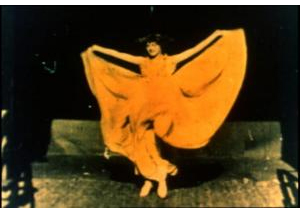Since its launch in 2010, Motion Bank has been capturing choreographic movements and transforming them into computer data made available online. Funded by the German Federal Cultural Foundation, the Hessian Ministry for Science and the Arts, the Kulturfonds Frankfurt RheinMain and the Altana Kulturstiftung, the scheme is a collaboration between the Forsythe Company, based in Germany, Ohio State University and several other international institutions. After nearly four years, it is wrapping up its first phase and getting ready to move into a second.
As its name evokes, the focus of Motion Bank is creating an online library of choreographic movements, which are captured, converted into visual data and released online as digital scores. Since its launch, the project has involved choreographers and research institutions in Europe and the U.S. – working on the scores, of course, but also engaging in workshops, symposia and software development.
“Our work was driven by this desire to communicate choreographic and dancing ideas to the widest possible readership,” says project leader Scott deLahunta. “The research instigated by this inspiration was extremely collaborative and open to new ideas and directions throughout its four years.”
The dual purpose of Motion Bank – Phase One consisted of facilitating the understanding of choreographic practices through computer graphics visualizations, and developing user-friendly software for choreographers to create their own digital scores. With several scores published and the release of PM2GO (a free, simpler version of the video annotation software Piecemaker), deLahunta considers that Motion Bank has succeeded in its initial goals.
The project was conceptualized by Frankfurt-based American choreographer William Forsythe, whose past works with Ballett Frankfurt were framed by a similar vision. Among other projects, he collaborated on an online score of his 2000 work One Flat Thing, reproduced with the Department of Dance and the Advanced Computing Center for the Arts and Design at The Ohio State University. In 2009, the score was published on the website Synchronous Objects, which became the prototype for Motion Bank.
“Motion Bank grew out of this experience and other long-standing interests and projects of Forsythe’s aimed at articulating choreographic knowledge and facilitating meaningful interdisciplinary exchange of ideas about dance in art and science contexts,” says Ohio State Associate Professor Norah Zuniga-Shaw. “The idea for Motion Bank was, in part, to get more choreographic approaches and ideas into the digital conversation.”
For Martine Époque, choreographer and co-founder of LARTech, a technochoreographic research and creation centre based in Montréal, digital technologies are increasingly present in dance just as they are in all spheres of human activity.
“Most current digital tools offer dance creators resolutely new and infinite perspectives on the expression of danced movements,” says Époque. “With motion capture, these possibilities are numerous and varied.”
However, these possibilities are often impeded by systems that are too “flawed and expensive,” in Époque’s opinion. Motion Bank attempts to overcome this latter obstacle, at least, by making its scores, research and materials freely accessible on the Internet. People involved in education, dance and digital arts are encouraged to make use of them creatively.
For now, the contents and structures of Phase Two are still undecided, but in the meantime, workshops and conferences are being organized around the findings of Phase One. Of course, feedback will play an important part in deciding what goes into the second phase of Motion Bank.
“We would welcome interested artists, scholars and other researchers from Canada to be in touch and be part of our discussion about what Phase Two will become,” concludes deLahunta.
Learn more >> motionbank.org




